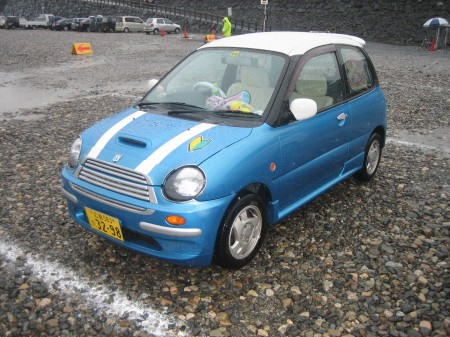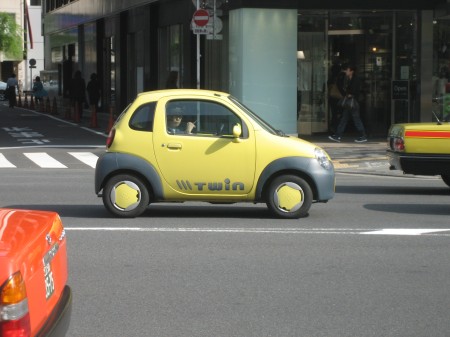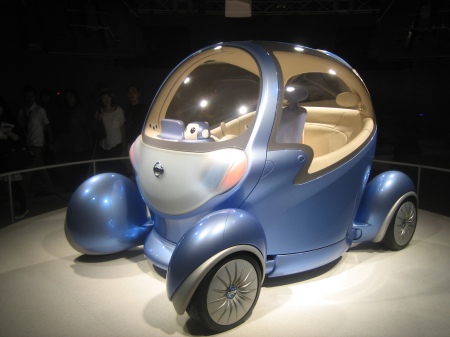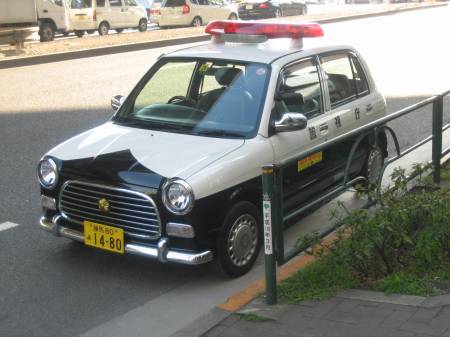When I first arrived in Japan, I decided to go totally native, eschewing all (or at least most) of the comforts of the decadent West: I moved into a tiny, decidedly non-Western style apartment, rode a bicycle (or used public transport) instead of driving a car, drank home-brewed tea and ate only Japanese food. I even watched Tokyo TV occasionally, a pastime about on a par, entertainment-wise, with gum surgery. I found that I got by quite well for the most part (TV aside), but after a while I got a hankering for something, anything, American. I don’t think it would have mattered much what it was: a movie, an English conversation, an order of chili fries. Just some small tangible reminder of the Western World. What I wound up getting was a KitKat bar, that light and crunchy chocolate-clad wafery confection, one bite of which would cast my taste buds back across the Great Pacific, or so I thought. I unwrapped it with relish, bit in, and promptly yelped “Blecch! What is this?”, making a gargoyle face as though it had been, say, a spoiled-pork flavored KitKat. I handed the package to my Japanese friend, and she looked at it casually and said, “What’s the problem? It’s a red bean KitKat. If you wanted a regular one, why didn’t you get a regular one?” Sure enough, although the package looked virtually identical to the American KitKat box, there were indeed small red beans illustrated, pouring out of the interior of the bar. Go figure, red beans. “They have other flavors too” she continued. “Green tea, white chocolate, pumpkin.” Pumpkin? A pumpkin KitKat? From that day forward, I kept an eye out in the grocery stores, 7-11s, and other venues that might sell chocolate bars, and sure enough I turned up several new flavors: Sakura (cherry blossom), Kiwi Fruit, Fuji Apple, and Muscat (green grape), among others, some of which were pretty tasty.
How did it happen that the US got only original flavor KitKats, but Japan had a half-dozen flavors or more? That was just not fair. By now I was full-on intrigued, so I did an internet search on Japanese KitKats, and found that my “half-dozen” estimate was somewhat low, about one hundred low, maybe more. For in Japan, you can get not only the regular bar, but also (and this is only a partial list):
Cacao, Iced Tea, Caramel and Salt (better than you might think), Kinako (soybean powder, really yummy), Chestnut, Orange, Latte, Strawberry, White Peach, Yellow Peach, Canteloupe, Triple Berry, Double Berry, Mango, Caramel Macchiato, Cinnamon, Milkshake, Watermelon, Mandarin, Hokkaido Blueberry, Luscious Lime, Soy Sauce (definitely an acquired taste), Sweet Potato, Roasted Tea, Hokkaido Red Pepper, Watermelon and Salt, Lemon Chocolate, Black Sugar, Rose, Custard, Jasmine, Tiramisu, Blueberry Cheesecake, Cranberry, Soy Milk, Mild Bitter and Orange, Inside Out (chocolate wafers on the inside, white chocolate outside), Genmaicha (green tea with crisped rice), Mochi, Strawberry Crunch, Passionfruit, Yoghurt, and Maple Syrup.
There are also at least two with alcohol content, Wine and Grand Marnier KitKats, which are not to be sold to anyone under age twenty, the legal age for alcohol consumption in Japan. There are regional-only specialties, like Okinawa Mango KitKats, Kyushu Cider With Pepper KitKats, or Hokkaido Butter Baked Potato KitKats (Japan’s northernmost main island, ever on the cutting edge, also offers Hokkaido Roasted Corn KitKats), so if you are jonesing for one of those, you have to find someone to send it to you, although occasionally you can turn up regional KitKats at the international airport shopping arcades. The weirdest one I had run across, up until today, at least, was Edamame flavor KitKat. Edamame will be well known to Japanese foodies, but for those who are not fans, it is a green soybean, and it tastes like peas, kinda sorta. A fine flavor for a legume, to be sure, but less so for a chocolate bar.
Today, though, I may have found the all time winner, the Lemon Vinegar KitKat. That is such an unbelievable concept that I feel honor bound to include a photo of the package, lest you think I am making it up. I haven’t sat down to savor it yet. I want to think about it for a while first. I mean, how would you even get the idea to put lemon, vinegar and chocolate into one mouth at one time? Soon Nestle, the producer, will have run out of eligible fruits and even combinations of fruits. What then, exotic spices? Meats? How about a Garlic Cilantro or Bratwurst KitKat? I suppose I ought not give them any ideas.
Did you know that there is a KitKat Museum? Or that enterprising amateur chocolatiers sell single bars (i.e., half a KitKat, one of the wrapped sections that come two to a package), for $2.95 and up on ebay? Or that there is a website devoted to KitKats from around the world? An entire planet-wide KitKat Kult, constantly on the lookout for new recruits.












 Posted by bruce
Posted by bruce 